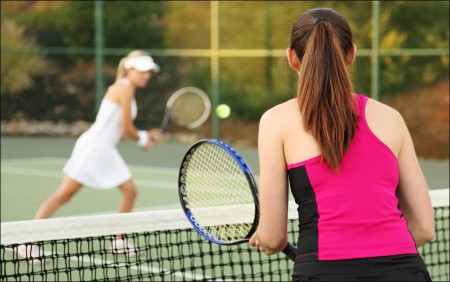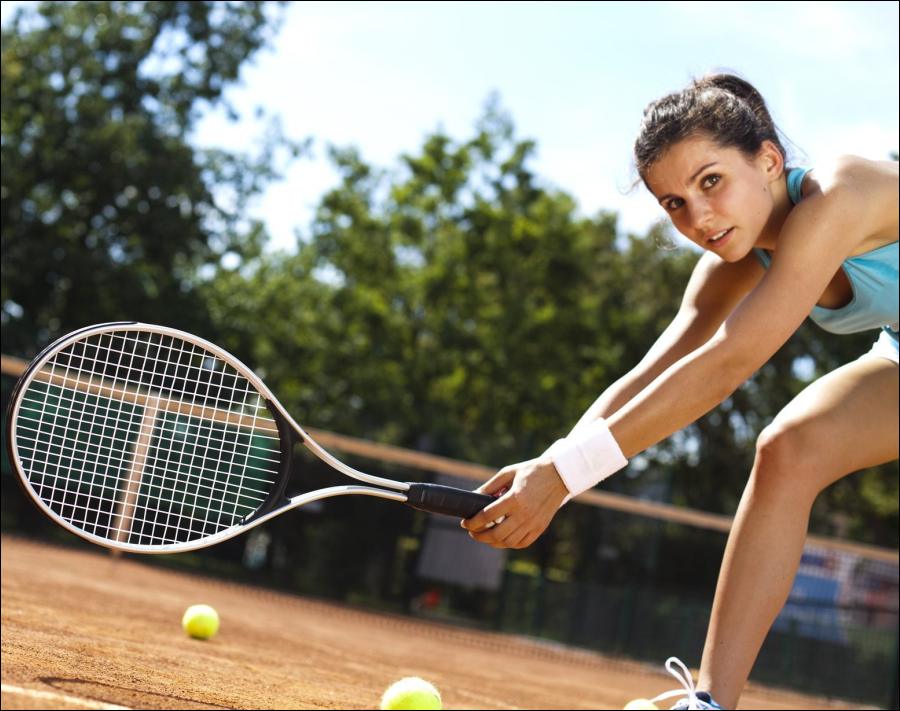We are now ready to take up the specific fundamentals of the game, and the first definite one in tennis is the foundation of all games played with a moving object: Keep your eye on the ball!
I am certain that in every hour I work with a beginner in the game, I repeat this instruction at least thirty times in some form. When I say, “Keep your eye on the ball,” I mean watch that ball from the time you first start to toss it to serve until the end of the point, and never look at anything else.
Naturally, the pupil decides this is exaggeration, that I am overdoing it. Let me assure you I am not. The pupil always wants to know how he can tell where to hit a ball if he doesn’t look over to see. He doesn’t need to watch the court. He took a look at it when he went out on it. It is stationary. It isn’t going to move off or change its dimensions. The lines are permanent. He knows that the net is in the middle and stands three feet high in the centre and three feet, six inches, at the posts, and will not change height during play. The lines, backstops, and sidestops are also fixed in position. They, too, will remain there.
Usually you can convince the pupil he need not watch the court or net quite easily, but his next hurdle is far more dillicult. “How about that guy I am playing?” he blurts out.
“How can I tell where he is if I don’t watch him?” A reasonable query, certainly, but the answers to it are easy and should satisfy anyone.
First of all you must remember that you are not trying to hit your opponent but to miss him. You are attempting to put the ball where he isn’t-not where he is.
“Ah, but I have to see him to know where he is!” cries the pupil. Not at all. If he is a good tennis player, you know where he is without having to see him, because a good tennis player will be in correct position. Correct position for a back-court player is about on the backline of the court and near the middle of it. If you are facing a net player, his correct position would be about eight feet back on his side of the net, and at a point that would be about two feet toward the centre of the court from a straight line drawn parallel to the sidelines from where you hit the ball down through his court.
So, if he is a good tennis player you know where he is without having to see him, and if he isn’t a good tennis player it doesn’t make much difference. where he is! After all, the thing you are attempting to hit is a moving ball, which requires the eye to change focus as that ball moves. Obviously, if the eye once Ioses sight of the ball, it is almost impossible to sight it again clearly in time to hit it cleanly.
Related Link: All About Tennis
Views: 406








